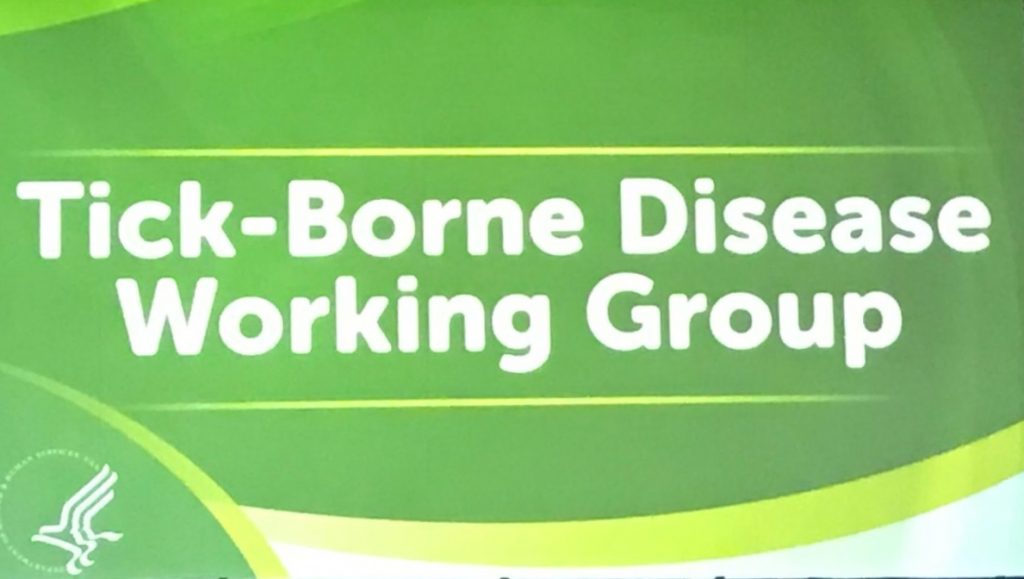What the CDC website gets wrong about Lyme disease

Subcommittee reports from the federal Tick-Borne Disease Working Group are now available for you to read on the Health and Human Services website.
Should you care? Yes. And here’s why:
These reports will help the Working Group decide what to ask Congress to do about Lyme disease and other tick-related conditions.
One of the most important subcommittees to Lyme patients is “Access to Care.” It’s chaired by Dr. Elizabeth Maloney and Captain Rebecca Bunnell, of the US Public Health Service.
It deals with the many barriers that prevent people from getting properly diagnosed and treated for Lyme disease.
The group’s report focuses on three key factors that account for many of the health disparities that patients with tick-borne illnesses experience:
- Patient-encountered barriers,
- Clinician-encountered barriers, and
- Medical educational barriers.
What does CDC website say about Lyme disease?
While there are a lot of nuggets in this report, I’d like to highlight the section that focuses on what the CDC website says about Lyme disease.
This is often one of the first places that patients (and their doctors) turn to for information. As a result, it’s one of the first barriers placed in the path of Lyme patients in need of treatment.
The report states:
- The content [of the CDC’s Lyme webpages] does not provide an accurate review of the current body of knowledge and fails to acknowledge what remains unknown, what is uncertain, and what continues to be debated [about Lyme disease].
- The webpages miss the opportunity to fully describe this multifaceted disease, its many and varied presentations, and the consequences of missed and delayed diagnosis and treatment. Although much of the content is factual, it lacks sufficient depth and, at times, perpetuates common misconceptions.
- The webpages on signs and symptoms do not provide detailed information regarding potential disease symptoms and signs or elements of the medical history that make Lyme disease more or less likely. Therefore, clinicians are ill-equipped to estimate patient-specific, pre-test probabilities. The section on diagnostic testing does not adequately discuss the well-known limitations of serologic testing.
- Treatment recommendations do not acknowledge the low quality of the available evidence on which they were based and leave no apparent room for clinicians to exercise clinical judgment or engage in shared decision-making.
- Although a limited list of references follows the treatment recommendations for erythema migrans, Lyme carditis, neurologic Lyme disease, and Lyme arthritis , these references do not appear to represent a systematic and comprehensive review of the pertinent evidence. Hand-cultivated lists are problematic because they often reflect the anchoring and confirmation biases of those selecting the evidence to be reviewed, which may perpetuate particular points of view, or even errors.
- The content regarding PLD/CLD [persistent Lyme disease/chronic Lyme disease] appears skewed in that it does not provide clinically helpful information or references regarding the condition, potential etiologies, knowns and unknowns, or the diverse and often conflicting scientific viewpoints that mark this challenging health problem. The list of references is overly weighted toward the risks associated with treatment and provides an inaccurate assessment of the potential benefits.
- Although information about the scientific evidence may be too detailed for the general public, it could and should be included on the “health care providers” webpage. At present, this webpage offers an inaccurate portrayal of the available scientific evidence and current state of clinical uncertainties. This is best exemplified by including a video of a patient discussing his misdiagnosis of Lyme disease while omitting any discussion or videos of patients with Lyme disease whose lives were irretrievably altered by diagnostic and therapeutic delays when Lyme disease was erroneously diagnosed as something else, or the complex problem of PLD/CLD.
So what to do about it?
Later in the report, the subcommittee recommends:
Fund and support a directive for CDC to conduct a review of CDC webpages and the current CDC TRAIN CME [continuing education modules] pertaining to the prevention, diagnosis, and treatment of Lyme disease to determine whether they best reflect the current state of the science and appropriately delineate areas of scientific uncertainty.
Sounds like a pretty good idea, don’t you think?
CDC Director Dr. Rochelle Walensky recently called for an organizational overhaul of the CDC, due to the agency’s missteps during the COVID pandemic.
A similar overhaul is needed for all the CDC’s missteps related to Lyme disease–including correcting the website problems listed above.
I hope the Working Group takes the subcommittee’s advice, and asks Congress to fix this–pronto.
Here are links to all the subcommittee reports:
2022 Subcommittee Reports
2022 Access to Care Subcommittee Report to the Tick-Borne Disease Working Group
2022 Diagnostics Subcommittee Report to the Tick-Borne Disease Working Group
2022 Disease Prevention and Treatment Subcommittee Report to the Tick-Borne Disease Working Group
2022 Tick Ecology Subcommittee Report to the Tick-Borne Disease Working Group
Next meeting of the Working Group is October 4-5. As usual, the public can tune in to watch it live. We’ll post details of that meeting when they become available.
TOUCHED BY LYME is written by Dorothy Kupcha Leland, Board President of LymeDisease.org. She is co-author of When Your Child Has Lyme Disease: A Parent’s Survival Guide. Contact her at dleland@lymedisease.org.




















We invite you to comment on our Facebook page.
Visit LymeDisease.org Facebook Page